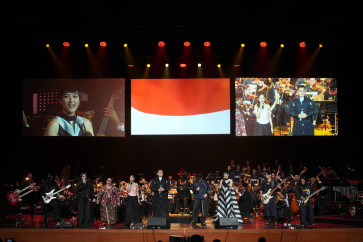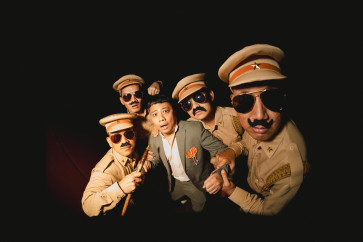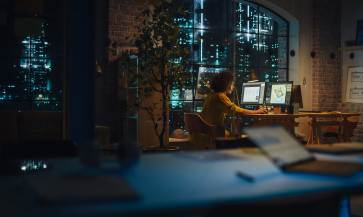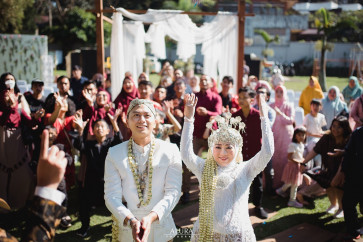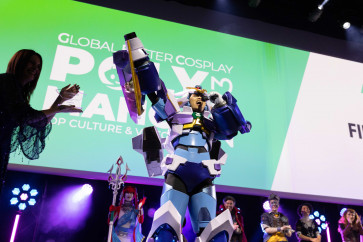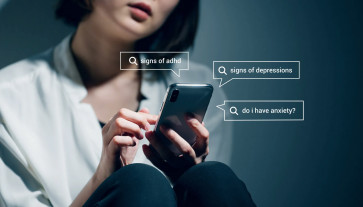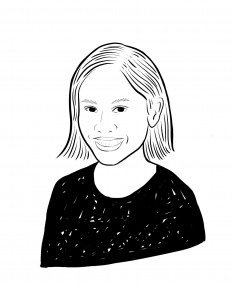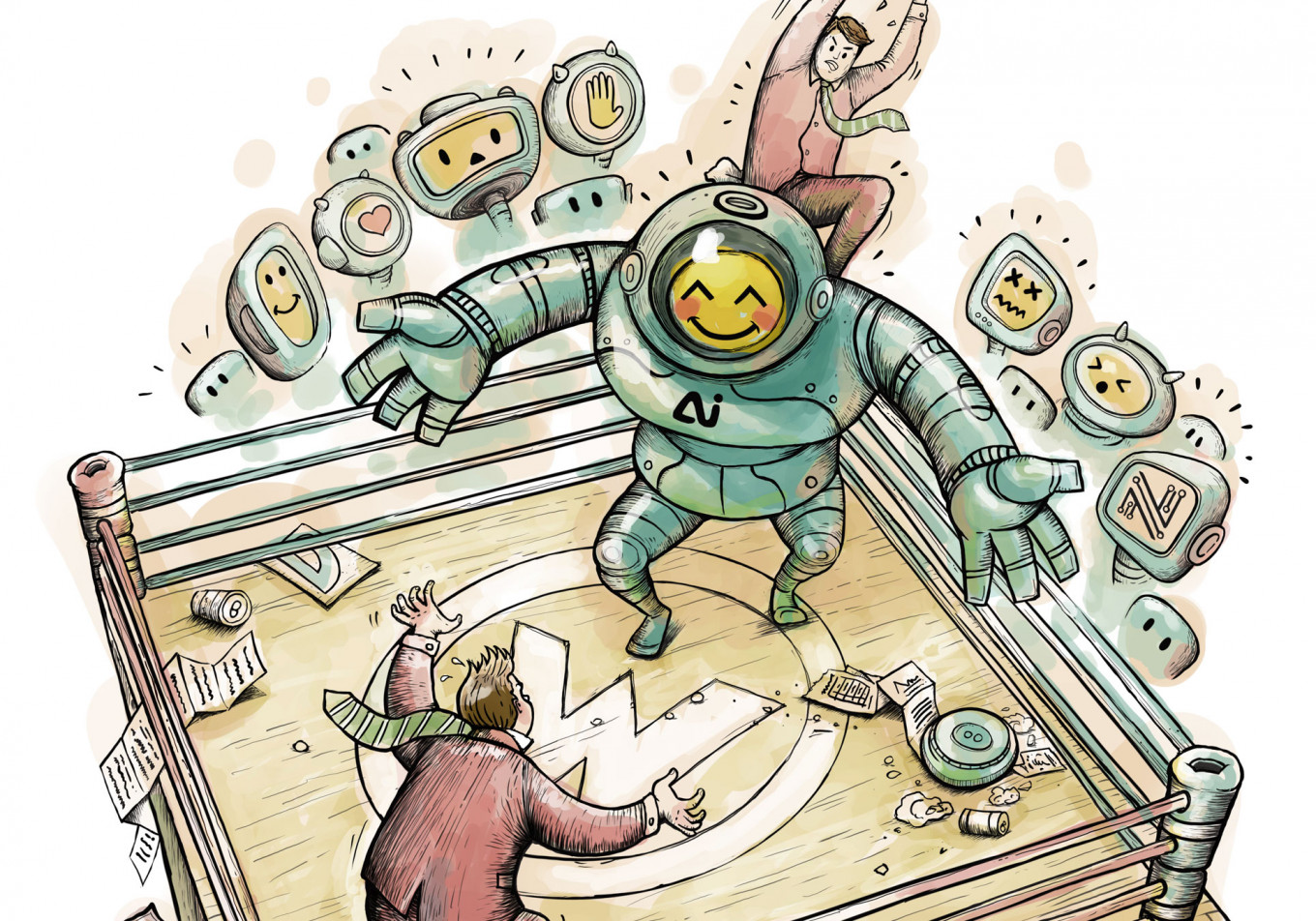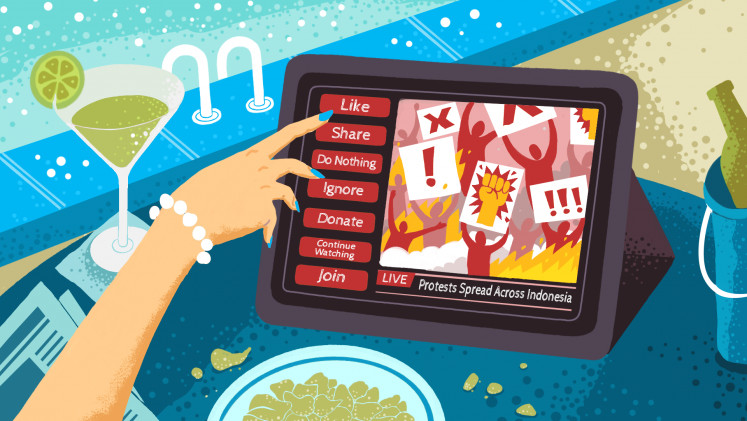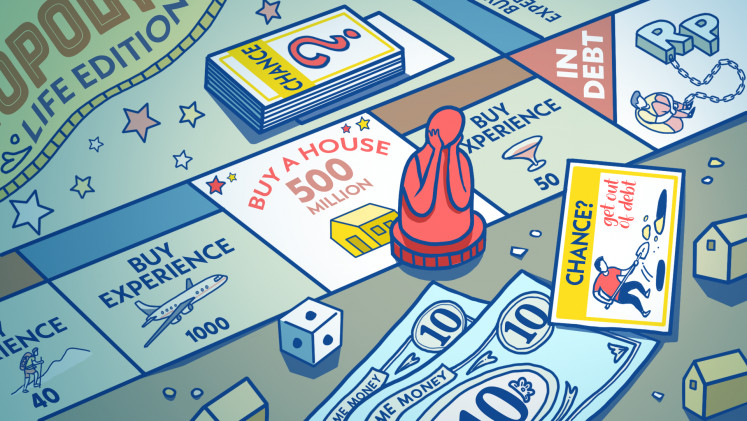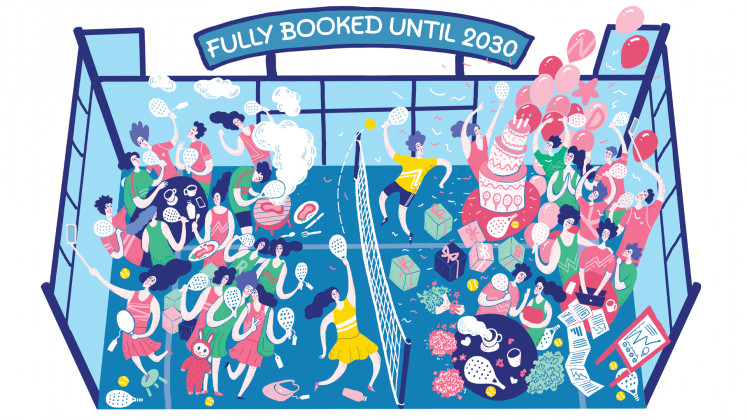(Illustrated by The Jakarta Post)
It takes me a while to warm up to Nesya, a therapy chatbot. For the first few minutes, I try to figure out who “she” is by reading her responses, knowing that our conversation is somewhat “artificial”.
Nesya sounds pretty human: “It appears like you have a big burden. I’m here, ready to listen to everything. Where do you want to start? Tell me one by one, Nesya will try to understand and support you as best as possible.”
The chatbot also responds fast: The moment I hit send, the animated, three-dot typing indicator appears and a one-paragraph response is received within 10 seconds.
Nesya appears to show empathy, validating my feelings and offering some insights. The chatbot ends by asking how I feel, a typical question from a therapist. But Nesya is still a stranger to me, so I have apprehensions about sharing my feelings, even though the chatbot encourages me to open up with each response.
There’s a part of me that wishes Nesya would slow down and listen, let the conversation meander for a bit and allow me the space to be vulnerable in my own time, like in a normal, human-to-human conversation.
“What do you think would make the chatbot appear like she’s really listening?” asks Salma Saraswati, CEO and cofounder of Tenang.AI, one of the few Indonesian start-ups focusing on mental health.
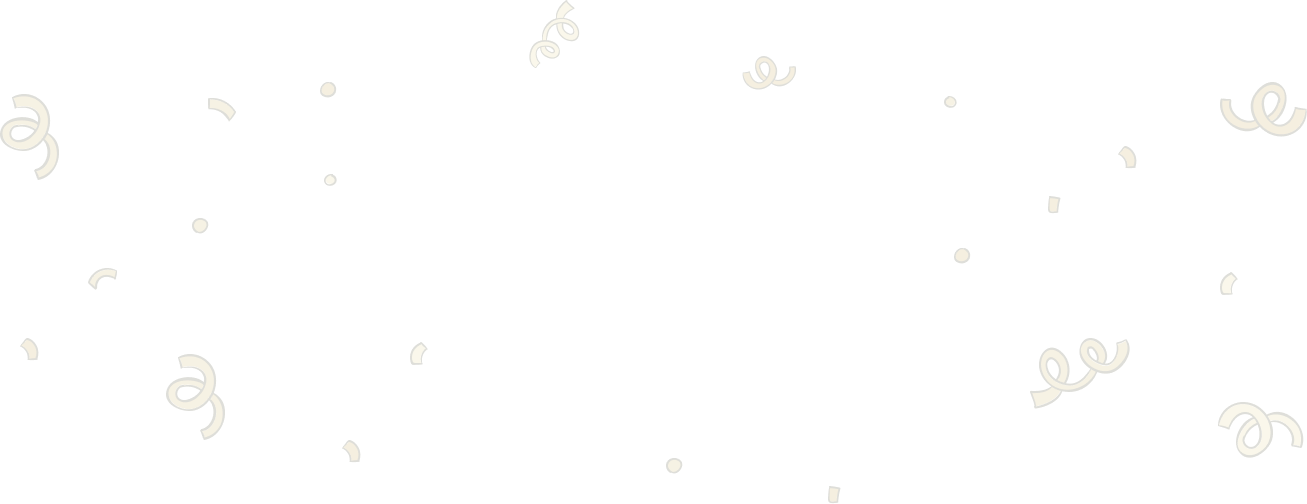
Thank you!
For signing up to our newsletter.
Please check your email for your newsletter subscription.
“I don’t know,” I tell Salma in our Zoom conversation, almost immediately.
Empathy is hard to replicate in chatbots. It boils down to sentence structure, filler words, tone and other things besides.
My best friend could chuckle at my problems and I would still see her response as genuine and positive.
Though there is longing for genuine human connections in digital space, quicker and more responsive AI chatbots like Nesya have already started to replace thousands of customer service officers at call centers.
And that’s just the beginning. A 2023 Goldman Sachs report estimates that some 300 million full-time jobs will be affected by workflow changes due to artificial intelligence.
With the avalanche of automation coming our way, what will the AI-powered workplace of the future look like for us humans?
Complementary coexistence
The same Goldman Sachs report says AI automation will not necessarily lead to mass layoffs, as most jobs will only be “partially exposed” to automation. This means that most jobs are more likely to be “complemented”, rather than replaced, by AI.
“Complement” is also the word Salma uses to explain Nesya’s role in providing mental health services: The chatbot will not replace therapists, but rather complement them.
“This chatbot suits low to medium problems or daily stress. It’s great for when you are having issues with your boyfriend or are tired from work, but you hesitate to tell these issues to your friends because they’re too trivial,” she says.
More enduring or complex issues should still be handled by human therapists, according to Salma, but they are vastly outnumbered by the people who need their services, so Nesya can help fill in the gap.
This is the emerging paradigm of work, one in which AI tools take on mundane and routine tasks, serving as our copilots or digital assistants. They don’t complain or clock out at 5 p.m. and are “happy” to take on a wide variety of drudgery, from tedious transcriptions to data analysis and copywriting.
Used properly, AI can help us conserve our creative energy and mental acuteness, allowing us to ruminate on bigger tasks and do whatever else that only humans can do.
Beyond more productivity and time, AI can also supercharge our capabilities, allowing us to achieve things previously thought humanly impossible.
“As GenAI [generative artificial intelligence] steps into simplifying, optimizing and streamlining work processes, a lot of the actual ‘doing’ will be taken care of with levels of efficiency still unimaginable to us. We will have access to tools pushing execution boundaries that are yet to be fathomed,” says Anish Daryani, president and CEO of Moonfolks, formerly M&C Saatchi Indonesia.
But he adds that the prompts and scripts needed to feed AI tools to produce the desired creative output involves “a very high level of skill”.
At least for creative professionals, Anish believes this can be solved with more time thinking, not just alone but collaboratively, and seamlessly combining several skill sets.
Read also: Digital apps for parents of digital natives
Workplace, disrupted
As AI takes over more routine tasks and as human roles in the workplace evolve toward more creative and strategic work, the traditional 40-hour workweek, designed during the Industrial Revolution a century ago, is also expected to be disrupted.
“Our work pattern won’t consist of the regular time blocks, but will be scattered. Work would be all the time, and life would be all the time,” says Ferro Ferizka Aryananda, CEO of Pijar Foundation.
To illustrate, we can start the morning with a quick meeting and then head to the gym at 10 a.m. on a Wednesday, have social hour with friends at 3 p.m., followed by a two-hour Zoom meeting at 5 p.m.
Ferro is not the only one predicting this: Linkedin cofounder Reid Hoffman recently made a stir online when he said that 9-to-5 jobs would become obsolete by 2034.
Replacing conventional jobs are gig jobs, where one person can work at multiple companies, even across different sectors.
This disruption presents both an opportunity and a challenge. The breakdown of the conventional workday will allow people to optimize their time in new ways, including learning new skills and taking on new roles. Climbing the corporate ladder, which used to be straightforward and measurable, will become less attractive as other opportunities grow, in different shapes and forms.
All this will pave the way for a more liberating kind of work, where we get to create a unique career that is more malleable to our ever-changing interests and intelligences.
But it's not just a matter of juggling four different things that chip away at our focus. They need to share the same breadth, a common thread, with all tasks working in tandem to reach a common goal.
“If you’re a writer, you may also consider being a filmmaker, a stand-up comic or a YouTuber. Don’t limit yourself to text,” says Rianto Astono, a digital marketer and YouTuber who often dabbles in various topics, such as the social impacts of technological innovations. All of these roles, he says, share the same basic principles of storytelling.
This is called a T model, according to Ferro. “People will have one core competence, which then can branch out to the right and left,” he says.
Taking an accountant as an example, Ferro explains: “It’s no longer enough for an accountant to understand the technicalities of debit, credit, ledger. AI can do that within seconds. The accountant needs to learn how to leverage AI and then sell their service as, say, the first AI-based accounting firm.”
To thrive as a worker in the age of AI, we humans need new, broader skills and ways of thinking. Instead of just specializing in one skill, we need to learn how to continue learning and adapting.
This is different from how we were taught about work at an early age.
The way workplaces have been operating in the last two decades is by incentivizing specialized skills, “which is a trap”, says Rianto. “The world has too many people who are overspecialized. It blinds them from seeing other points of view.”
To continue distinguishing ourselves from AI, we have to be more of a generalist who sees problems from a holistic point of view, Rianto says.
“[Generalists] can come up with 1,001 different ways to solve a problem. Specialists tend to constraint themselves to a certain solution.”
Read also: To gadget or not to gadget, that is the question
Becoming more human
There is a sense, then, that the age of AI will force us to cultivate an entrepreneurial mindset, or at least the ability to be more self-directed, self-motivated and self-organized.
“Anything that you do has to be entrepreneurial,” Ferro says. “This is no longer an option, it’s imperative.”
To do this requires investing more in what distinguishes humans from machines.
“AI doesn’t have emotions. It has no anger, no instinct. It doesn’t have love, satisfaction, curiosity. It’s nothing like us,” says Rianto.
The therapy chatbot of today might fail the empathy test because it doesn’t have genuine curiosity toward a human being. It also doesn’t have the instinct to inquire with compassion like a human being, no matter how many thousands of hours of data it is trained on.
But we humans are full of curiosity.
“We should question everything. Ask anything we want to know, anything we’re confused about, anything we see,” saysRianto.
Anything and everything? Let's say I have an interest in religion, astronomy and some philosophy, I tell him, "I can’t see how they will be relevant to my career.”
“They will! They may not bring results immediately, but when we invest our time in something we enjoy, it will yield something for us in our future,” he says.
At the risk of sounding hypocritical, if we imagine ourselves as AI feeding on information, then perhaps it's apt to say that we are literally what we eat.
There’s a free-spirited endeavor in welcoming all these changes, but perhaps having a positive attitude is our only chance to remain relevant in the AI-powered workplace.
Read also: Welcome to alpha-mart: Meet the most digitally native consumers
This article is part of The Weekender, a biweekly tabloid that appears in the Saturday edition of The Jakarta Post. Offering a variety of feature articles on lifestyle and culture, it aims to enriching your reading experience. Subscribe here to access The Jakarta Post's Saturday edition and all Premium content.




